Cubism & Futurism
1/6
There's no tags or description
Looks like no tags are added yet.
Name | Mastery | Learn | Test | Matching | Spaced |
|---|
No study sessions yet.
7 Terms

Pablo Picasso, Les Demoiselles d’Avignon, Oil on Canvas, 1907.
Movement: Early Cubism
Composition: Fragmented, geometric bodies; no linear perspective
Color & Light: Warm, earthy tones; shadows flattened
Space & Perspective: Multiple viewpoints at once (inspired by African masks)
Function & Meaning: Challenged traditional beauty; influenced by primitivism
Compare To: Braque’s Violin and Palette (Analytical Cubism)
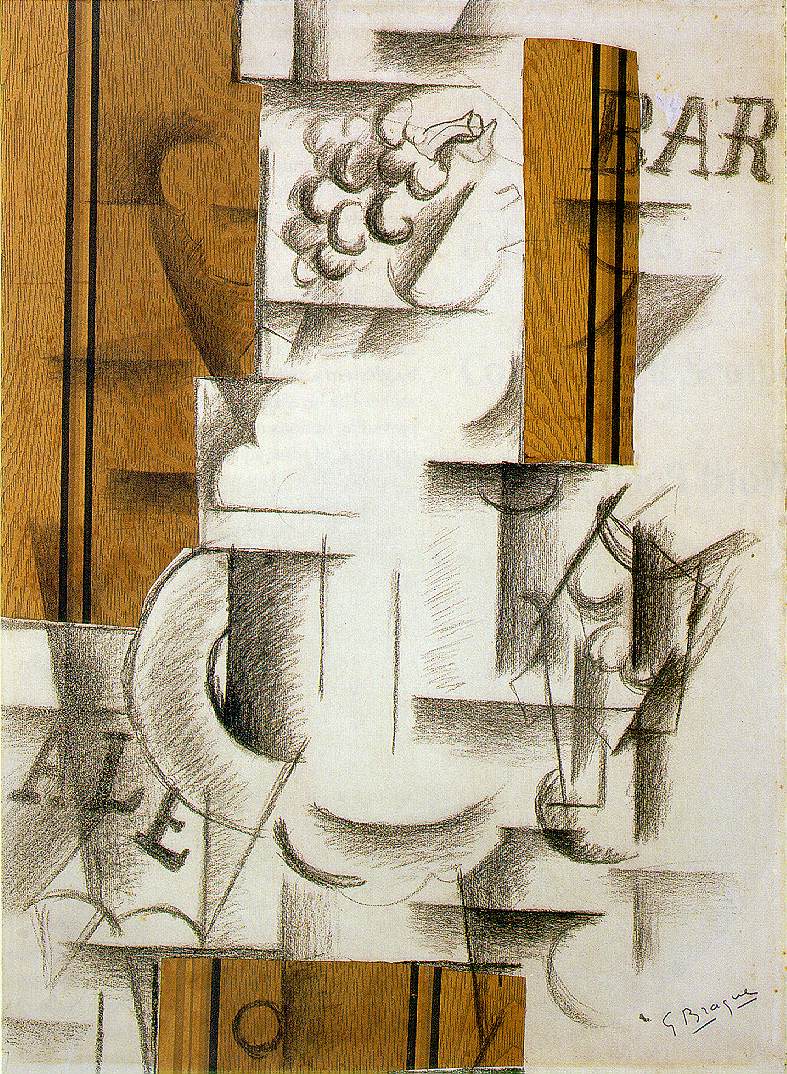
Georges Braque, Fruit Dish and Glass, Charcoal and Pasted Paper on Paper, 1912.
Movement: Analytical Cubism
Composition: Fragmented forms; overlapping planes; use of collage (papier colle); monochromatic color scheme
Color & Light: Muted browns and grays; minimal contrast; subtle shading to suggest volume
Space & Perspective: Flattened perspective; interplay of transparency and opacity; text and shapes merge with the background
Function & Meaning: Introduced collage into fine art, challenging traditional painting techniques; explored the relationship between reality and representation
Compare To: Picasso’s Still Life with Chair Caning (Synthetic Cubism)
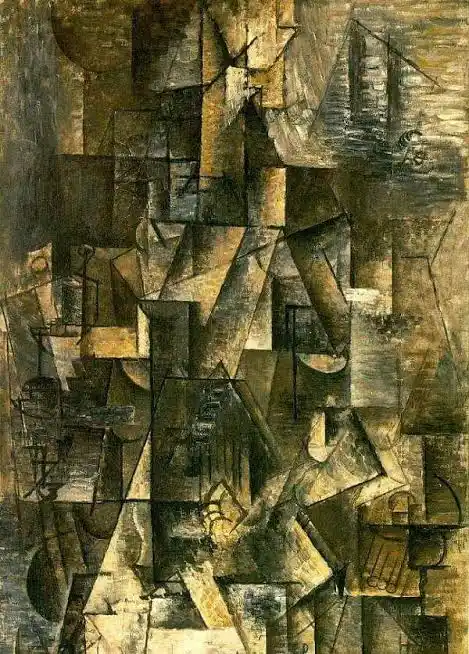
Pablo Picasso, Ma Jolie, Oil on Canvas, 1911-1912.
Movement: Analytical Cubism
Composition: Fragmented geometric shapes; broken-down forms; interwoven planes creating a dense composition
Color & Light: Muted, monochromatic palette (browns, grays, beiges); subtle shading suggests depth without clear light source
Space & Perspective: Overlapping planes; ambiguous spatial depth; forms dissolve into the background
Function & Meaning: References a popular song (“Ma Jolie” = “My Pretty”); challenges traditional representation by deconstructing form; explores the relationship between art and language (incorporates text)
Compare To: Braque’s The Portuguese (Analytical Cubism)
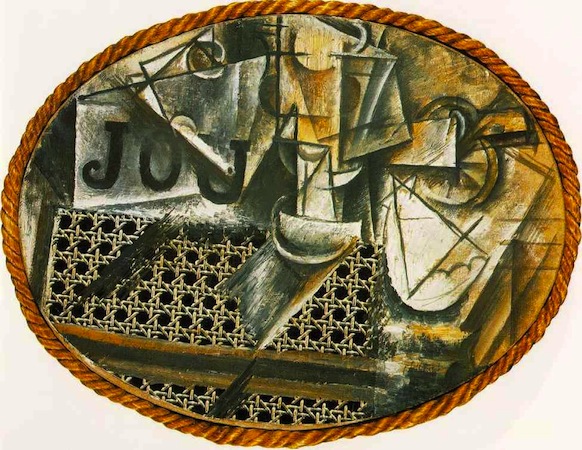
Pablo Picasso, Still Life with Chair-Caning, Oil and Oilcloth on Canvas with Rope Frame, 1912.
Movement: Synthetic Cubism
Composition: Collage elements (oilcloth with printed chair caning pattern); fragmented yet more recognizable objects; use of mixed media
Color & Light: Warmer tones (yellow, brown, gray, blue); contrast between painted and real textures; shading used selectively
Space & Perspective: Flattened perspectvie; overlapping planes; illusionistic and real elements blended together
Function & Meaning: One of the first collage works in fine art; challenges traditional painting by incorporating industrial materials; explores reality vs representation
Compare To: Braque’s Fruit Dish and Glass (papier colle technique)
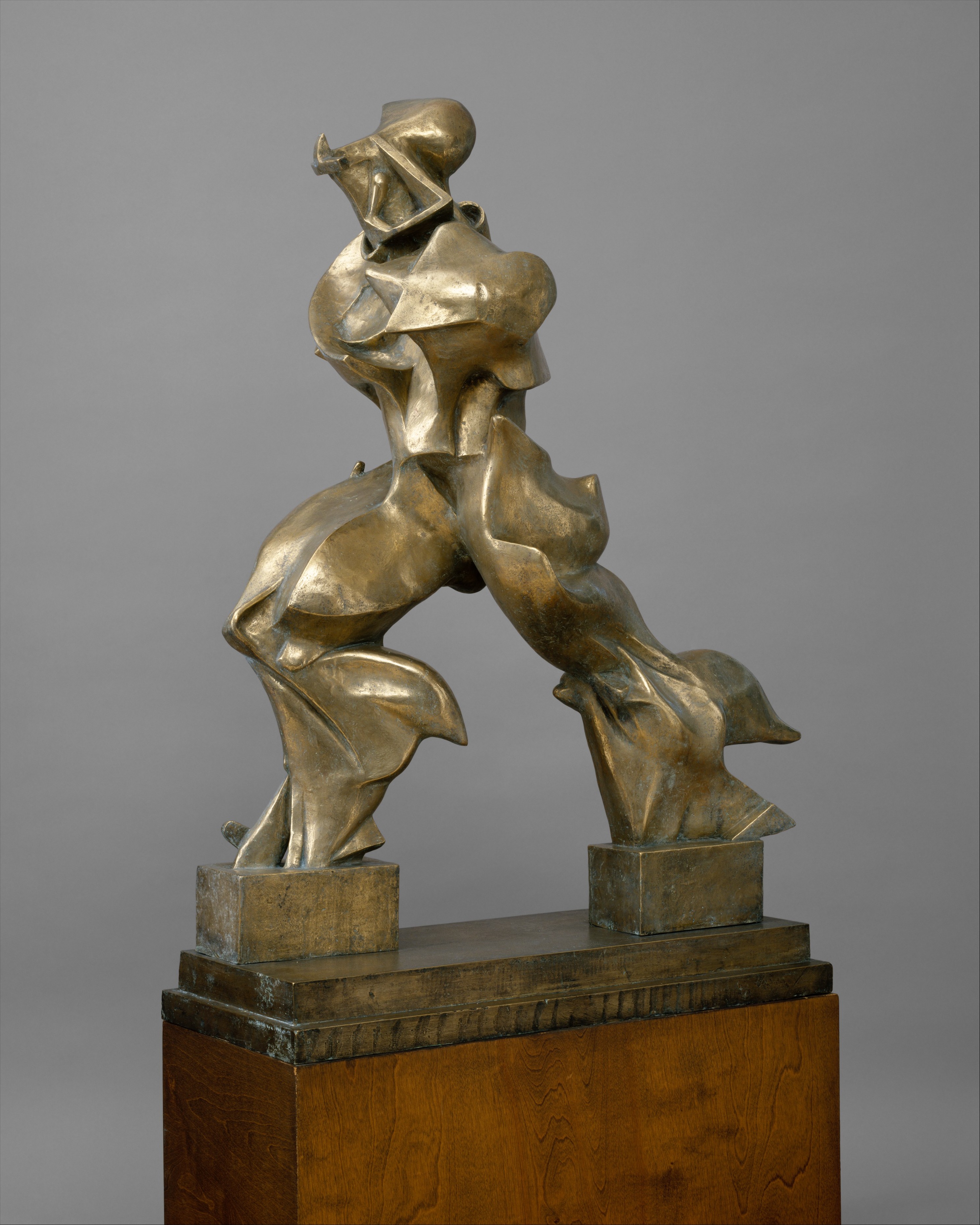
Umberto Boccioni, Unique Forms of Continuity in Space, Bronze, 1913.
Movement: Futurism
Composition: Dynamic, abstracted human form; flowing, aerodynamic shapes suggesting movement; elongated limbs and exaggerated contours
Color & Light: Originally plaster, later cast in bronze; reflective surface enhances sense of fluidity and motion
Space & Perspective: Open, extending into surrounding space; sense of forward propulsion; figure appears to merge with its environment
Function & Meaning: Celebrates speed, technology, and modernity; embodies Futurist ideals of movement and progress; rejects classical stability in favor of dynamism
Compare To: Duchamp’s Nude Descending a Staircase No. 2 (similar focus on movement and fragmentation)
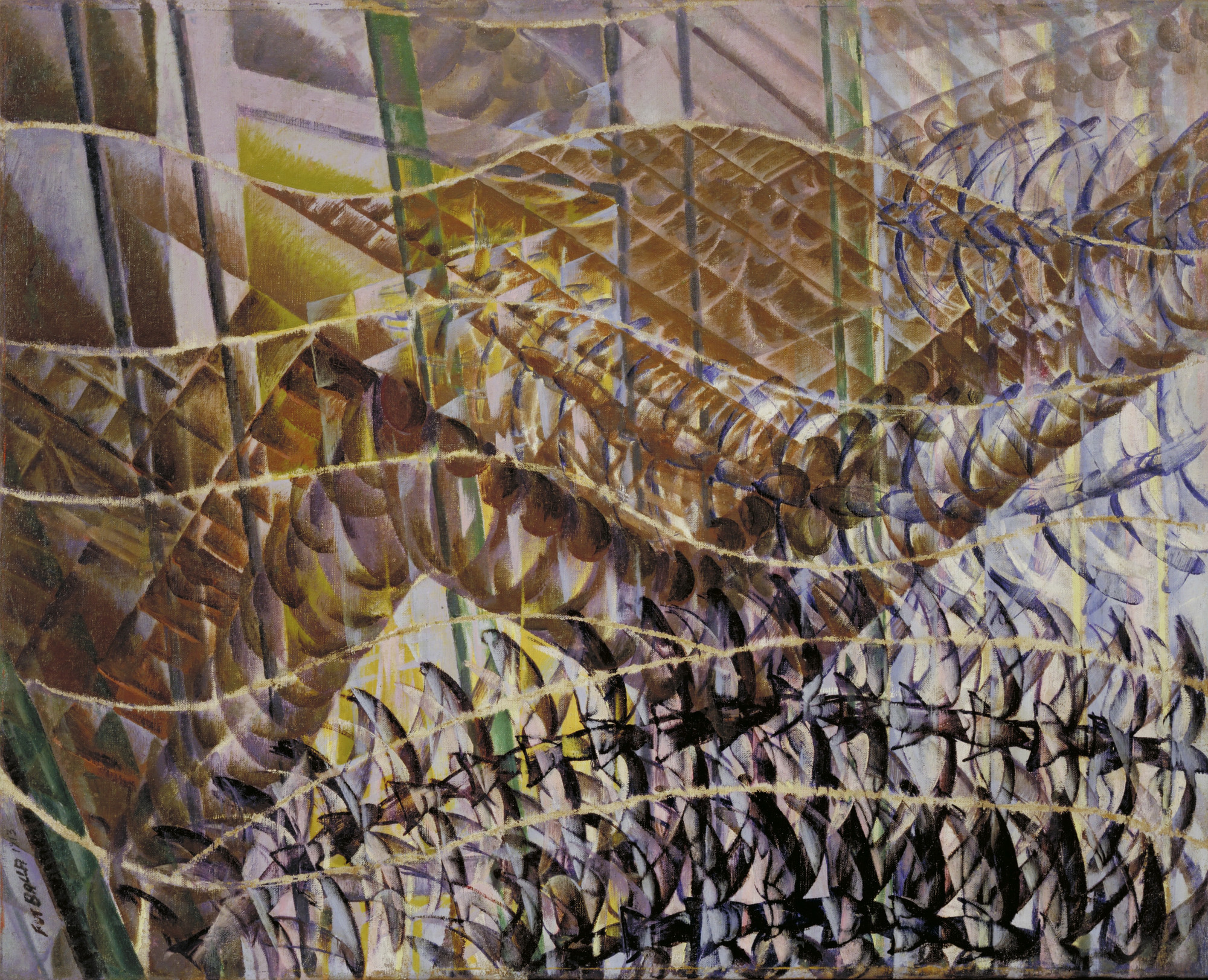
Giacomo Balla, Swifts: Paths of Movement + Dynamic Sequences, Oil on Canvas, 1913.
Movement: Futurism
Composition: Repetition of forms to suggest motion; diagonal lines and curves to create a sense of speed and dynamism; fragmented and abstracted shapes
Color & Light: Limited but high-contrast palette; use of light and dark to enhance energy and movement; dynamic interplay of color to suggest motion
Space & Perspective: Flattened space; overlapping shapes create depth; movement depicted through sequential positioning of forms
Function & Meaning: Captures the essence of motion in a static image; influenced by scientific photography and chronophotography; aligns with Futurist ideals of speed and modernity
Compare To: Duchamp’s Nude Descending a Staircase No. 2 (both depict movement through fragmentation and repetition)

Luigi Russolo, La Rivolta (The Revolt), Oil on Canvas, 1911.
Movement: Futurism
Composition: Bold, diagonal lines create a sense of force and movement; abstracted, faceless figures; radiating shapes enhance dynamism
Color & Light: Vivid, high-contrast palette (red, orange, yellow) symbolizes energy and passion; strong tonal contrasts emphasize movement
Space & Perspective: Flattened space; overlapping figures create depth; swirling background suggests chaos and motion
Function & Meaning: Represents the power of revolution and change; aligns with Futurist ideals of upheaval, energy, and progress; evokes a sense of urgency and action
Compare To: Boccioni’s The City Rises (similar Futurist themes of energy and transformation)